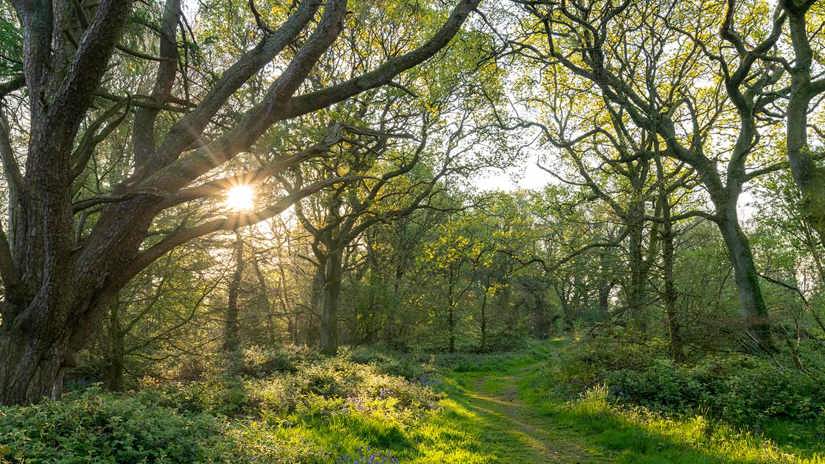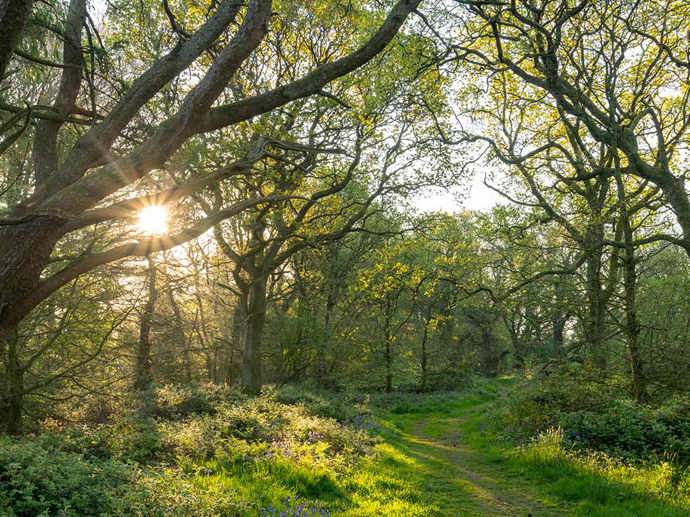

Go exploring
Primordial landscapes, tangled branches, breathtaking wildlife and miles of woodland trails. From the countryside to cities, we care for thousands of woods throughout the UK, all free to visit.

Public enquiries officer
Have you spotted something unusual growing on a tree recently? Mystery growths on trees is one of my favourite subjects! Many common galls in the UK are easy to spot and identify, and once you’re familiar with a few of the species, you’ll start spotting them everywhere.
Galls are a somewhat specialist topic; there aren’t many scientists dedicated to their research, and much of the information on them is collated by enthusiasts. Unfortunately, this also means that many galls don’t have a common name, only a scientific name. But don’t let this put you off!
Here's our gall guide for beginners.
A gall is defined as a growth on a plant that is made of plant tissue but caused by another organism. These organisms might be insects, bacteria, fungi or viruses. Insect galls are the most common. There are estimated to be around 133,000 gall-causing insect species in the world, and that’s only for one type of gall causer (the organism that causes the gall) – less is known about bacteria, fungi and viral galls, so the true number of gall types will be even higher. As you’ll see in the examples below, galls vary in size and shape; nature is very creative!
All galls are formed for the same sort of purpose: the deformity is a deliberate mechanism by the gall causer to use the plant for its own purposes. In ecological terms, it’s known as a parasitic relationship. The gall causer manipulates the plant tissue for itself, but the plant receives no benefits in exchange. Most galls don’t harm the plant though and will have no effect on the health of the host trees.
This is one of our most well-known galls. It occurs on both our native oak species, as well as other oak species, and can be found across the UK. It’s caused by a gall wasp, Biorhiza pallida. The wasp lays her eggs inside a dormant leaf bud, which then hatch in spring and start the process for the formation of galls. These galls tend to drop from the trees in June, when the larvae are mature and ready to fly. However, some remain on the tree, going very woody.

Oak marble galls are caused by another gall wasp, this time Andricus kollari. The marble gall is found on pendunculate oaks. The wasp was intentionally introduced from the Mediterranean in the 1800s because its galls have a high tannin content, which was useful for tanning leather and dyeing cloth. The gall should have little dimples on its surface. Inside, the wasp larvae are protected from bad weather by the woody outer shell and the tannins.

The knopper gall is a relatively new arrival in the UK as the wasp only arrived in the 1950s. It’s found mostly on pendunculate oaks in England and Wales. The wasp, Andricus quercuscalicis, lays its eggs on the freshly pollinated flowers of the oak, causing the offspring to deform the acorn for its own uses. This gall develops over the summer and falls to the ground in autumn when the larvae emerge.

There are four types of spangle gall in the UK, caused by four different gall wasps. Unless you’re really interested in galls, it’s fine to just call what you’ve found a spangle gall and leave it at that. All four look very similar, although if you look very closely they have different surface structures. They are found throughout the UK on both our native oak species, although they also like other oak species. The galls appear in spring when the wasp lays their eggs on the new leaves, and the larvae emerge during the summer.

This is a well-known gall which you may have seen before without realising. The Ancient Greeks referenced it in their writings, and the word ‘bedeguar’ (pronounced be-du-gar) is Persian, referring to a kind of thistle. It’s found across the UK, and particularly enjoys hot, dry summers. It’s most commonly found on dog rose, sweet-briar and field roses, but other members of the rosa genus can be hosts. It’s rarely found on cultivated roses in your garden.
We have five rose gall wasps in the UK. The one that causes the bedeguar gall is Diplolepis rosae. Each gall contains many larvae, each living in their own chamber inside the gall. The gall reaches full size in late July to early August, and the larvae don’t leave until the following spring when they’re fully grown.

This gall is caused by a couple of species of rust from the Gymnosporangium genus. You can find it on juniper and hawthorn trees. The ‘tongues’ (known as telia) produce spores which then blow in the wind to infect new hosts.
The gall tends to look brown and perhaps a bit shrivelled, but when it rains, the telia swell and turn orange, making it clear where the name ‘tongues of fire’ comes from.
This gall is more of a problem in the US, where it can affect fruit trees and potentially reduce crop yields. In the UK it’s not as much of a problem, and it doesn’t affect the overall health of the host trees.

Lime nail galls are caused by a mite. Each red gall is known as a pouch gall. The female mite feeds from the new leaves of lime trees in spring, causing galls to form. She comes back at a later date when the pouch is partly formed, and lays her eggs inside. Each gall can contain hundreds of larvae by the end of summer. The larvae live and feed in the galls until late summer, when they leave to find a site to overwinter. The galls don’t fall from the leaves, but remain on them until the leaves drop in autumn as normal.

Witches brooms are a type of gall that can be found quite easily.
If you’re not sure where to start looking for galls, head out into the woods or alongside some old native hedging. You’ll need to get up close and start noticing the details on the leaves, fruits and buds. Once you know what you’re looking for, you might start noticing odd deformities in many trees, but don’t be alarmed - most galls don’t cause any harm to the tree. And if you find something you can’t identify, take lots of photos and email us at enquiries@woodlandtrust.org.uk – we’d love to hear from you!


Primordial landscapes, tangled branches, breathtaking wildlife and miles of woodland trails. From the countryside to cities, we care for thousands of woods throughout the UK, all free to visit.